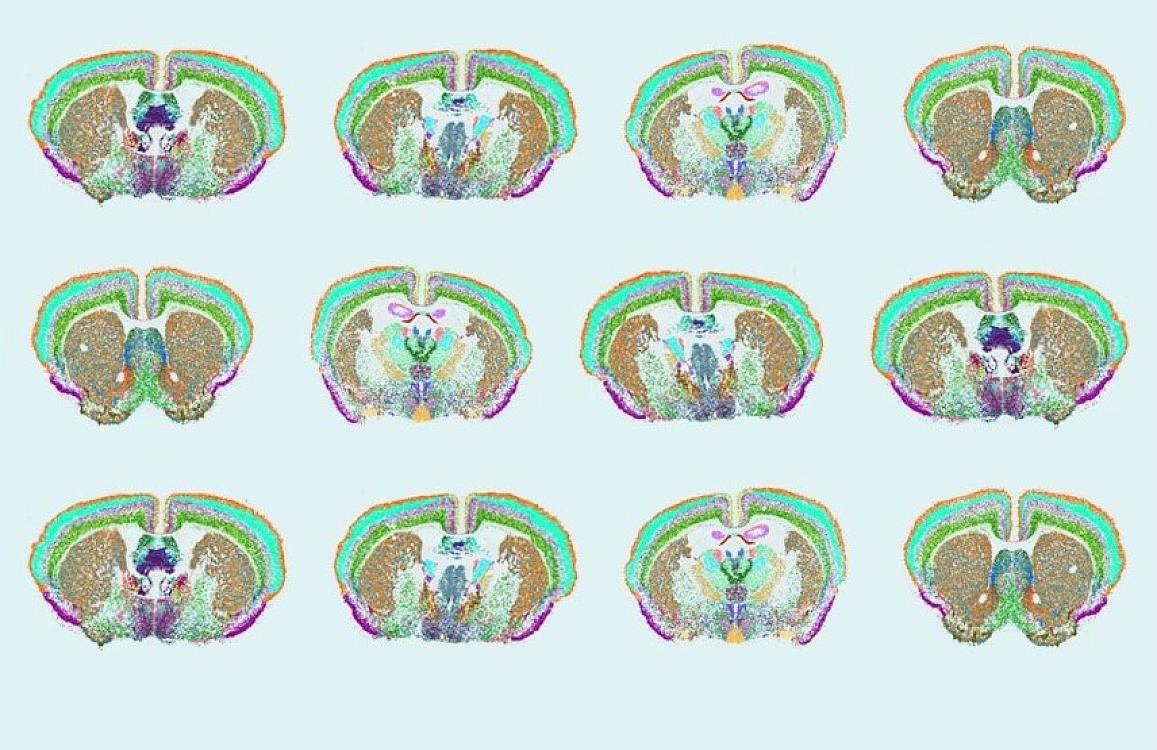For the very first time, a global team of researchers has successfully crafted a comprehensive cell atlas for an entire mammalian brain.
 Scientists measured 500 genes in the mouse brain to reveal the complex distribution of cell types throughout the brain. Image Credit: Yao/van Velthoven/Zeng, Allen Institute.
Scientists measured 500 genes in the mouse brain to reveal the complex distribution of cell types throughout the brain. Image Credit: Yao/van Velthoven/Zeng, Allen Institute.
This detailed map specifically focuses on the mouse brain, providing exhaustive information on the type, location, and molecular characteristics of over 32 million cells. Additionally, it offers insights into the connectivity among these cells.
Given the mouse's widespread use as a vertebrate experimental model in neuroscience research, this cellular atlas opens the door to a deeper comprehension of the human brain, often regarded as the most potent computer in existence.
Beyond mapping the intricate cellular landscape, the atlas establishes a crucial foundation for advancing precision therapeutics tailored to individuals grappling with mental and neurological disorders.
The research, supported by funding from the National Institutes of Health's Brain Research Through Advancing Innovative Neurotechnologies® Initiative, known as The BRAIN Initiative®, has culminated in the publication of a series of 10 papers in Nature.
The mouse atlas has brought the intricate network of mammalian brain cells into unprecedented focus, giving researchers the details needed to understand human brain function and diseases.
Joshua Gordon, M.D., Ph.D., Director, National Institute of Mental Health, National Institutes of Health
The cell atlas delineates the cell types present in each segment of the mouse brain and their arrangement within those regions. Beyond structural insights, the atlas furnishes an exceptionally detailed inventory of the cell's transcriptome—the comprehensive collection of gene expressions in a cell, encompassing instructions for synthesizing proteins and other cellular components.
The transcriptomic data within the atlas is meticulously organized in a hierarchical fashion, elucidating cell classes, subclasses, and myriad individual cell clusters throughout the brain.
Additionally, the atlas delves into characterizing the cell epigenome—chemical modifications to a cell's DNA and chromosomes that influence the expression of genetic information. It meticulously outlines thousands of epigenomic cell types and millions of potential genetic regulatory elements for various brain cell types.
Collectively, including structural, transcriptomic, and epigenetic information in this atlas offers an unparalleled depiction of cellular organization and diversity across the mouse brain.
The atlas also provides an account of the neurotransmitters and neuropeptides employed by distinct cells, shedding light on the relationships among different cell types within the brain.
This wealth of information serves as a comprehensive blueprint for understanding how chemical signals are initiated and transmitted in various brain regions. These electrical signals form the foundation for the operation of brain circuits and, consequently, the overall functioning of the brain.
This product is a testament to the power of this unprecedented, cross-cutting collaboration and paves our path for more precision brain treatments.
John Ngai, Ph.D., Director, BRAIN Initiative, National Institutes of Health
Among the 10 studies featured in this compilation, seven have received funding from the NIH BRAIN Initiative Cell Census Network (BICCN), while the remaining two are supported by the broader NIH BRAIN Initiative.
The primary objective of the BICCN, an innovative cross-collaborative initiative dedicated to unraveling the cellular composition of the brain, is to construct a thorough catalog of brain cells.
This initiative seeks to illuminate the locations of these cells, comprehend their developmental processes, understand their collaborative functions, and explore the mechanisms through which they regulate their activities.
The ultimate goal is to enhance the understanding of how brain disorders manifest, progress, and can be optimally treated.
By leveraging the unique nature of its multi-disciplinary and international collaboration, the BICCN was able to accomplish what no other team of scientists has been able to before. Now we are ready to take the next big step—completing the cell maps of the human brain and nonhuman primate brains.
John Ngai, Ph.D., Director, BRAIN Initiative, National Institutes of Health
Source:
Journal reference:
Yao, Z., et al. (2023) A high-resolution transcriptomic and spatial atlas of cell types in the whole mouse brain. Nature. doi.org/10.1038/s41586-023-06812-z.